The heart of a mechanical watch is its movement. A "10-beat" movement indicates that the balance, the most important component for determining the accuracy of a watch, oscillates at a rate of 10 beats per second. Most mechanical watches, in every price range, operate at 5 to 8 beats per second. A higher rate of oscillation makes a watch more resistant to external factors and reduces fluctuations in dynamic accuracy—the watch's accuracy while being worn. Seiko has succeeded in producing Grand Seiko calibers with 10-beat movements, calibers 9S85 and 9S86, and in doing so has developed watches with greater resistance to disturbances and reduced accuracy fluctuation when worn.
Because watch parts come into more frequent contact in a 10-beat movement, they need to be made more durable. Calibers 9S85 and 9S86 are made with parts manufactured using leading-edge technologies. These parts include a uniquely developed hairspring as well as an escape wheel and pallet made with Micro Electro Mechanical System (MEMS) technology, and a balance wheel processed with laser displacement sensors to achieve the ultimate balance.
The strict standards set for Grand Seiko are even more rigorous than the most widely accepted chronometer standard. To meet such strict requirements, Seiko’s master watchmakers must demonstrate an ability to discern differences down to the micron level—0.001 mm. They must also have the balance and control necessary to make fine adjustments that exceed even the limits of high-tech machinery. The calibers combine high accuracy and reliability with a finished beauty that exudes a sense of polished craftsmanship.
They are the work of a true manufacture, the culmination of Seiko's expert craftsmanship and cutting-edge technologies.
MEMS is an acronym for Micro Electro Mechanical System—a state-of-the-art processing technology used to manufacture high-precision components such as semiconductors. MEMS differs from the old metal processing methods of pressing, cutting, and polishing. Instead, molds made through photolithography (a process similar to developing photos using light-sensitive chemicals) are layered with material to form the desired shape. This processing method allows for the manufacturing of complex shapes with greater accuracy than cutting, and produces smoothly finished surfaces. The technology also makes it possible to use hard material in parts and adjust their shape for a more lightweight design, thereby greatly improving the precision and durability of the watch parts.
Tsutomu Ito joined Seiko in 1991 and immediately showed talent, earning several qualifications and distinguishing himself in national skills competitions. In 2000 he was transferred to the Shizuku-ishi Watch Studio to work in hairspring adjustment as a Grand Seiko assembly technician. He is now in charge of assembly and adjustment processes in the production of the Grand Seiko 9S movements. In 2013 he earned the most difficult-to-obtain title of "IW Meister" in the Iwate Mechanical Watchmaker Skills Assessment for his professional expertise as a mechanical watch technician, further proof of his incredible technique. Mr. Ito's abilities in assembly and adjustment will continue to set the standard for Grand Seiko mechanical watches.

Few would dispute that Grand Seiko is the leading Japanese wristwatch in production today. The Shizuku-ishi Watch Studio produces Grand Seiko’s high-grade mechanical watches through a process which integrates everything from parts manufacturing to assembly, adjustment, and testing. The watch studio, one of only a handful of true manufactures in the world today, is located in the Seiko facility in Morioka in Northern Japan.
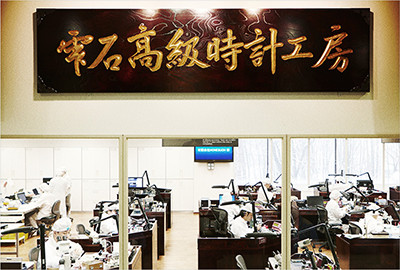 +
+
To achieve the high accuracy and durability of Grand Seiko, MEMS technology and cutting-edge laser welding techniques are used in combination with extremely high-level manual skills practiced by technical experts in assembly and adjustment. In this way, the Studio can produce watches with some of the highest levels of accuracy in the world.
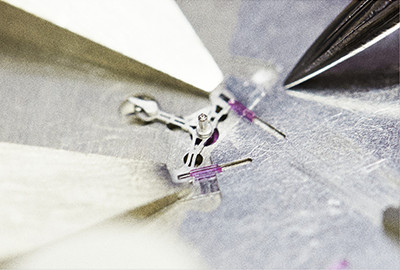 +
+
The hairspring attached to the balance wheel is a key determinant of a watch’s accuracy. Seiko uses an independently developed machine to adjust the balance wheel and ensure its stable and highly accurate performance. Yet, even with industrially manufactured parts, occasional production errors resulting in deviations from the design specification in the 0.001 mm range are inevitable. Even if individual parts are up to standard, there are rare occasions when the combination of the slightest flaws in two parts will cause them to fall short of the strict requirements set for Grand Seiko. But even flaws such as these can be manually corrected by a highly skilled technical expert to bring them into line with the inspection criteria. The hand craftsmanship and judgement of an experienced artisan exceed the limitations of machinery and are capable of producing a watch with even greater accuracy and reliability.
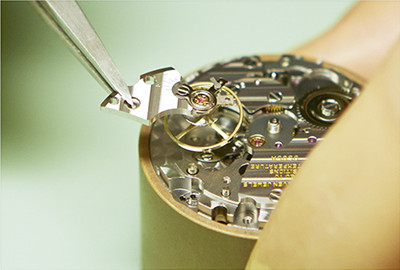 +
+
Every component, even the very smallest, is produced in-house. This means that if a problem involving parts were ever to arise, communication to resolve the issue is carried out swiftly and an improved part can be produced. This is the greatest advantage of a true manufacture, and it is used to produce a truly special wristwatch of tremendous reliability and high quality that the customer can wear and cherish for years.
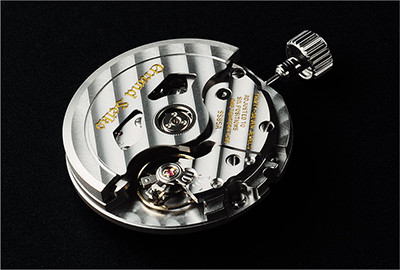 +
+
Part of the Seiko Instruments Inc. facility in Morioka, the Shizuku-ishi Studio is dedicated to creating the very finest Seiko and Grand Seiko mechanical wristwatches. At the heart of the Studio is the assembly room in which the air is dust-free and where each artisan has a designated workbench and chair customized with his or her preferred tools and equipment, arranged so as to facilitate the best craftsmanship possible.
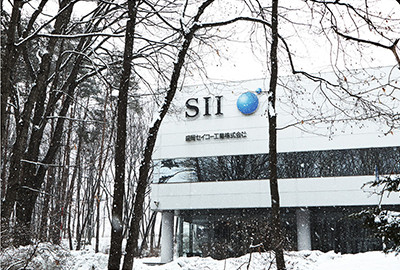 +
+





















